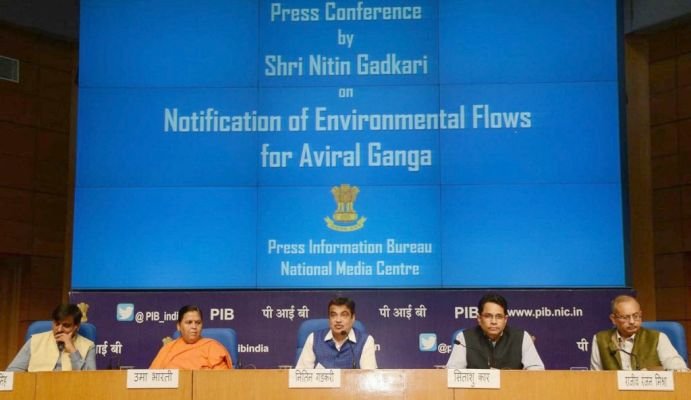Environmental flows (e-flow) are the acceptable flow regimes that are required to maintain a river in the desired environmental state or predetermined state.
The Central Government yesterday notified the minimum environmental flows for River Ganga that has to be maintained at various locations on the river. This notification would go a long way in ensuring its Aviralta or continuous flow.
“This is a very significant moment. The discussions on notifying e flow of Ganga has been going on for a long time. We have taken this step to ensure a minimum amount of flow in the river”, Shri Nitin Gadkari said.
The notification will ensure that the river has at least the minimum required environmental flow of water even after the river flow gets diverted by projects and structures for purposes like irrigation, hydropower, domestic and industrial use etc.
The e-flow notified by the Government is as follows:
Upper Ganga River Basin Stretch starting from originating glaciers and through respective confluences finally meeting at Devaprayag up to Haridwar:
| Sl No | Season | Months | (%)Monthly Average
Flow observed during each of preceding 10-daily period |
| 1 | Dry | November to March | 20 |
| 2 | Lean | October, April and May | 25 |
| 3 | High Flow | June to September | 30*# |
*# 30% of monthly flow of High flow season.
Stretch of main stem of River Ganga from Haridwar, Uttrakhand to Unnao, Uttar Pradesh
| Sl No | Location of
Barrage |
Minimum flow releases
immediately downstream of barrages (In Cumecs) Non-Monsoon (October to May ) |
Minimum flow
releases immediately downstream of barrages (In Cumecs) Monsoon (June to September) |
| 1 | Bhimgoda
(Haridwar) |
36 | 57 |
| 2 | Bijnor | 24 | 48 |
| 3 | Narora | 24 | 48 |
| 4 | Kanpur | 24 | 48 |
The Central Water Commission will be the designated authority and the custodian of the data, and will be responsible for supervision, monitoring, regulation of flows and reporting of necessary information to the appropriate authority as and when required and also take emergent decisions about the water storage norms in case of any emergency.
This is a PIB News-Feed which was edited by Clean-Future Team






